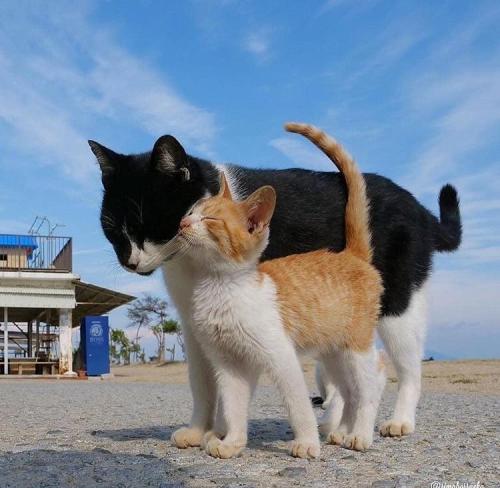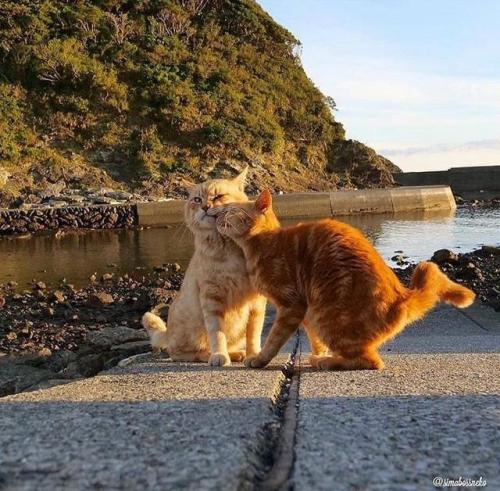5 Ways The Moon Landing Changed Life On Earth
5 Ways the Moon Landing Changed Life on Earth
When Neil Armstrong took his first steps on the Moon 50 years ago, he famously said “that’s one small step for a man, one giant leap for mankind.” He was referring to the historic milestone of exploring beyond our own planet — but there’s also another way to think about that giant leap: the massive effort to develop technologies to safely reach, walk on the Moon and return home led to countless innovations that have improved life on Earth.
Armstrong took one small step on the lunar surface, but the Moon landing led to a giant leap forward in innovations for humanity.
Here are five examples of technology developed for the Apollo program that we’re still using today:
1. Food Safety Standards
As soon as we started planning to send astronauts into space, we faced the problem of what to feed them — and how to ensure the food was safe to eat. Can you imagine getting food poisoning on a spacecraft, hundreds of thousands of miles from home?
We teamed up with a familiar name in food production: the Pillsbury Company. The company soon realized that existing quality control methods were lacking. There was no way to be certain, without extensive testing that destroyed the sample, that the food was free of bacteria and toxins.
Pillsbury revamped its entire food-safety process, creating what became the Hazard Analysis and Critical Control Point system. Its aim was to prevent food safety problems from occurring, rather than catch them after the fact. They managed this by analyzing and controlling every link in the chain, from the raw materials to the processing equipment to the people handling the food.
Today, this is one of the space program’s most far-reaching spinoffs. Beyond keeping the astronaut food supply safe, the Hazard Analysis and Critical Point system has also been adopted around the world — and likely reduced the risk of bacteria and toxins in your local grocery store.

2. Digital Controls for Air and Spacecraft
The Apollo spacecraft was revolutionary for many reasons. Did you know it was the first vehicle to be controlled by a digital computer? Instead of pushrods and cables that pilots manually adjusted to manipulate the spacecraft, Apollo’s computer sent signals to actuators at the flick of a switch.
Besides being physically lighter and less cumbersome, the switch to a digital control system enabled storing large quantities of data and programming maneuvers with complex software.
Before Apollo, there were no digital computers to control airplanes either. Working together with the Navy and Draper Laboratory, we adapted the Apollo digital flight computer to work on airplanes. Today, whatever airline you might be flying, the pilot is controlling it digitally, based on the technology first developed for the flight to the Moon.

3. Earthquake-ready Shock Absorbers
A shock absorber descended from Apollo-era dampers and computers saves lives by stabilizing buildings during earthquakes.
Apollo’s Saturn V rockets had to stay connected to the fueling tubes on the launchpad up to the very last second. That presented a challenge: how to safely move those tubes out of the way once liftoff began. Given how fast they were moving, how could we ensure they wouldn’t bounce back and smash into the vehicle?
We contracted with Taylor Devices, Inc. to develop dampers to cushion the shock, forcing the company to push conventional shock isolation technology to the limit.
Shortly after, we went back to the company for a hydraulics-based high-speed computer. For that challenge, the company came up with fluidic dampers—filled with compressible fluid—that worked even better. We later applied the same technology on the Space Shuttle’s launchpad.
The company has since adapted these fluidic dampers for buildings and bridges to help them survive earthquakes. Today, they are successfully protecting structures in some of the most quake-prone areas of the world, including Tokyo, San Francisco and Taiwan.

4. Insulation for Space
We’ve all seen runners draped in silvery “space blankets” at the end of marathons, but did you know the material, called radiant barrier insulation, was actually created for space?
Temperatures outside of Earth’s atmosphere can fluctuate widely, from hundreds of degrees below to hundreds above zero. To better protect our astronauts, during the Apollo program we invented a new kind of effective, lightweight insulation.
We developed a method of coating mylar with a thin layer of vaporized metal particles. The resulting material had the look and weight of thin cellophane packaging, but was extremely reflective—and pound-for-pound, better than anything else available.
Today the material is still used to protect astronauts, as well as sensitive electronics, in nearly all of our missions. But it has also found countless uses on the ground, from space blankets for athletes to energy-saving insulation for buildings. It also protects essential components of MRI machines used in medicine and much, much more.

Image courtesy of the U.S. Marines
5. Healthcare Monitors
Patients in hospitals are hooked up to sensors that send important health data to the nurse’s station and beyond — which means when an alarm goes off, the right people come running to help.
This technology saves lives every day. But before it reached the ICU, it was invented for something even more extraordinary: sending health data from space down to Earth.
When the Apollo astronauts flew to the Moon, they were hooked up to a system of sensors that sent real-time information on their blood pressure, body temperature, heart rate and more to a team on the ground.
The system was developed for us by Spacelabs Healthcare, which quickly adapted it for hospital monitoring. The company now has telemetric monitoring equipment in nearly every hospital around the world, and it is expanding further, so at-risk patients and their doctors can keep track of their health even outside the hospital.

Only a few people have ever walked on the Moon, but the benefits of the Apollo program for the rest of us continue to ripple widely.
In the years since, we have continued to create innovations that have saved lives, helped the environment, and advanced all kinds of technology.
Now we’re going forward to the Moon with the Artemis program and on to Mars — and building ever more cutting-edge technologies to get us there. As with the many spinoffs from the Apollo era, these innovations will transform our lives for generations to come.
Make sure to follow us on Tumblr for your regular dose of space: http://nasa.tumblr.com.
More Posts from Ocrim1967 and Others
What is Gravitational Lensing?
A gravitational lens is a distribution of matter (such as a cluster of galaxies) between a distant light source and an observer, that is capable of bending the light from the source as the light travels towards the observer. This effect is known as gravitational lensing, and the amount of bending is one of the predictions of Albert Einstein’s general theory of relativity.

This illustration shows how gravitational lensing works. The gravity of a large galaxy cluster is so strong, it bends, brightens and distorts the light of distant galaxies behind it. The scale has been greatly exaggerated; in reality, the distant galaxy is much further away and much smaller. Credit: NASA, ESA, L. Calcada
There are three classes of gravitational lensing:
1° Strong lensing: where there are easily visible distortions such as the formation of Einstein rings, arcs, and multiple images.

Einstein ring. credit: NASA/ESA&Hubble
2° Weak lensing: where the distortions of background sources are much smaller and can only be detected by analyzing large numbers of sources in a statistical way to find coherent distortions of only a few percent. The lensing shows up statistically as a preferred stretching of the background objects perpendicular to the direction to the centre of the lens. By measuring the shapes and orientations of large numbers of distant galaxies, their orientations can be averaged to measure the shear of the lensing field in any region. This, in turn, can be used to reconstruct the mass distribution in the area: in particular, the background distribution of dark matter can be reconstructed. Since galaxies are intrinsically elliptical and the weak gravitational lensing signal is small, a very large number of galaxies must be used in these surveys.

The effects of foreground galaxy cluster mass on background galaxy shapes. The upper left panel shows (projected onto the plane of the sky) the shapes of cluster members (in yellow) and background galaxies (in white), ignoring the effects of weak lensing. The lower right panel shows this same scenario, but includes the effects of lensing. The middle panel shows a 3-d representation of the positions of cluster and source galaxies, relative to the observer. Note that the background galaxies appear stretched tangentially around the cluster.
3° Microlensing: where no distortion in shape can be seen but the amount of light received from a background object changes in time. The lensing object may be stars in the Milky Way in one typical case, with the background source being stars in a remote galaxy, or, in another case, an even more distant quasar. The effect is small, such that (in the case of strong lensing) even a galaxy with a mass more than 100 billion times that of the Sun will produce multiple images separated by only a few arcseconds. Galaxy clusters can produce separations of several arcminutes. In both cases the galaxies and sources are quite distant, many hundreds of megaparsecs away from our Galaxy.
Gravitational lenses act equally on all kinds of electromagnetic radiation, not just visible light. Weak lensing effects are being studied for the cosmic microwave background as well as galaxy surveys. Strong lenses have been observed in radio and x-ray regimes as well. If a strong lens produces multiple images, there will be a relative time delay between two paths: that is, in one image the lensed object will be observed before the other image.

As an exoplanet passes in front of a more distant star, its gravity causes the trajectory of the starlight to bend, and in some cases results in a brief brightening of the background star as seen by a telescope. The artistic concept illustrates this effect. This phenomenon of gravitational microlensing enables scientists to search for exoplanets that are too distant and dark to detect any other way.Credits: NASA Ames/JPL-Caltech/T. Pyle
Explanation in terms of space–time curvature

Simulated gravitational lensing by black hole by: Earther
In general relativity, light follows the curvature of spacetime, hence when light passes around a massive object, it is bent. This means that the light from an object on the other side will be bent towards an observer’s eye, just like an ordinary lens. In General Relativity the speed of light depends on the gravitational potential (aka the metric) and this bending can be viewed as a consequence of the light traveling along a gradient in light speed. Light rays are the boundary between the future, the spacelike, and the past regions. The gravitational attraction can be viewed as the motion of undisturbed objects in a background curved geometry or alternatively as the response of objects to a force in a flat geometry.

A galaxy perfectly aligned with a supernova (supernova PS1-10afx) acts as a cosmic magnifying glass, making it appear 100 billion times more dazzling than our Sun. Image credit: Anupreeta More/Kavli IPMU.
To learn more, click here.










(Source)
10 Things: CubeSats — Going Farther
Now that the MarCOs — a pair of briefcase-sized interplanetary CubeSats — seem to have reached their limit far beyond Mars, we’re looking forward to an expanding era of small, versatile and powerful space-based science machines.
Here are ten ways we’re pushing the limits of miniaturized technology to see just how far it can take us.

1. MarCO: The Farthest (So Far)
MarCO, short for Mars Cube One, was the first interplanetary mission to use a class of mini-spacecraft called CubeSats.
The MarCOs — nicknamed EVE and WALL-E, after characters from a Pixar film — served as communications relays during InSight’s November 2018 Mars landing, beaming back data at each stage of its descent to the Martian surface in near-real time, along with InSight’s first image.
WALL-E sent back stunning images of Mars as well, while EVE performed some simple radio science.
All of this was achieved with experimental technology that cost a fraction of what most space missions do: $18.5 million provided by NASA’s Jet Propulsion Laboratory in Pasadena, California, which built the CubeSats.
WALL-E was last heard from on Dec. 29; EVE, on Jan. 4. Based on trajectory calculations, WALL-E is currently more than 1 million miles (1.6 million kilometers) past Mars; EVE is farther, almost 2 million miles (3.2 million kilometers) past Mars.

MarCO-B took these images as it approached Mars in November 2018. Credit: NASA/JPL-Caltech
2. What Are CubeSats?
CubeSats were pioneered by California Polytechnic State University in 1999 and quickly became popular tools for students seeking to learn all aspects of spacecraft design and development.
Today, they are opening up space research to public and private entities like never before. With off-the-shelf parts and a compact size that allows them to hitch a ride with other missions — they can, for example, be ejected from the International Space Station, up to six at a time — CubeSats have slashed the cost of satellite development, opening up doors to test new instruments as well as to create constellations of satellites working together.
CubeSats can be flown in swarms, capturing simultaneous, multipoint measurements with identical instruments across a large area. Sampling entire physical systems in this way would drive forward our ability to understand the space environment around us, in the same way multiple weather sensors help us understand global weather systems.
Ready to get started? Check out NASA’s CubeSats 101 Guide.

Engineer Joel Steinkraus uses sunlight to test the solar arrays on one of the Mars Cube One (MarCO) spacecraft at NASA’s Jet Propulsion Laboratory. Credit: NASA/JPL-Caltech
3. Measuring Up
The size and cost of spacecraft vary depending on the application; some are the size of a pint of ice cream while others, like the Hubble Space Telescope, are as big as a school bus.
Small spacecraft (SmallSats) generally have a mass less than 400 pounds (180 kilograms) and are about the size of a large kitchen fridge.
CubeSats are a class of nanosatellites that use a standard size and form factor. The standard CubeSat size uses a “one unit” or “1U” measuring 10x10x10 centimeters (or about 4x4x4 inches) and is extendable to larger sizes: 1.5, 2, 3, 6, and even 12U.

The Sojourner rover (seen here on Mars in 1997) is an example of small technology that pioneered bigger things. Generations of larger rovers are being built on its success.
4. A Legacy of Small Pathfinders
Not unlike a CubeSat, NASA’s first spacecraft — Explorer 1 — was a small, rudimentary machine. It launched in 1958 and made the first discovery in outer space, the Van Allen radiation belts that surround Earth. It was the birth of the U.S. space program.
In 1997, a mini-rover named Sojourner rolled onto Mars, a trial run for more advanced rovers such as NASA’s Spirit, Opportunity and Curiosity.
Innovation often begins with pathfinder technology, said Jakob Van Zyl, director of the Solar System Exploration Directorate at NASA’s Jet Propulsion Laboratory. Once engineers prove something can be done, science missions follow.

5. Testing in Space
NASA is continually developing new technologies — technologies that are smaller than ever before, components that could improve our measurements, on-board data processing systems that streamline data retrievals, or new methods for gathering observations. Each new technology is thoroughly tested in a lab, sometimes on aircraft, or even at remote sites across the world. But the space environment is different than Earth. To know how something is going to operate in space, testing in space is the best option.
Sending something unproven to orbit has traditionally been a risky endeavor, but CubeSats have helped to change that. The diminutive satellites typically take less than two years to build. CubeSats are often a secondary payload on many rocket launches, greatly reducing cost. These hitchhikers can be deployed from a rocket or sent to the International Space Station and deployed from orbit.
Because of their quick development time and easy access to space, CubeSats have become the perfect platform for demonstrating how a new technological advancement will perform in orbit.

RainCube is a mini weather satellite, no bigger than a shoebox, that will measure storms. It’s part of several new NASA experiments to track storms from space with many small satellites, instead of individual, large ones. Credit: UCAR
6. At Work in Earth Orbit
A few recent examples from our home world:
RainCube, a satellite no bigger than a suitcase, is a prototype for a possible fleet of similar CubeSats that could one day help monitor severe storms, lead to improving the accuracy of weather forecasts and track climate change over time.
IceCube tested instruments for their ability to make space-based measurements of the small, frozen crystals that make up ice clouds. Like other clouds, ice clouds affect Earth’s energy budget by either reflecting or absorbing the Sun’s energy and by affecting the emission of heat from Earth into space. Thus, ice clouds are key variables in weather and climate models.

Rocket Lab’s Electron rocket lifts off from Launch Complex 1 for the NASA ELaNa19 mission. Credit: Trevor Mahlmann/Rocket Lab
7. First Dedicated CubeSat Launch
A series of new CubeSats is now in space, conducting a variety of scientific investigations and technology demonstrations following a Dec. 17, 2018 launch from New Zealand — the first time CubeSats have launched for NASA on a rocket designed specifically for small payloads.
This mission included 10 Educational Launch of Nanosatellites (ELaNa)-19 payloads, selected by NASA’s CubeSat Launch Initiative:
CubeSat Compact Radiation Belt Explorer (CeREs) — High energy particle measurement in Earth’s radiation belt
Simulation-to-Flight 1 (STF-1) — Software condensing to support CubeSat implementations
Advanced Electrical Bus (ALBus) — Advances in solar arrays and high capacity batteries
CubeSat Handling Of Multisystem Precision Time Transfer (CHOMPTT) — Navigation plans for exo-planetary implementation
CubeSail — Deployment and control of a solar sail blade
NMTSat — Magnetic field, high altitude plasma density
Rsat — Manipulation of robotic arms
Ionospheric Scintillation Explorer (ISX) — Plasma fluctuations in the upper atmosphere
Shields-1 — Radiation shielding
DaVinci — High School to Grade School STEM education
8. The Little CubeSat That Could
CubeSat technology is still in its infancy, with mission success rates hovering near 50 percent. So, a team of scientists and engineers set out on a quest. Their goal? To build a more resilient CubeSat — one that could handle the inevitable mishaps that bedevil any spacecraft, without going kaput.
They wanted a little CubeSat that could.
They got to work in 2014 and, after three years of development, Dellingr was ready to take flight.
Read the Full Story: Dellingr: The Little CubeSat That Could

Artist’s concept of Lunar Flashlight. Credit: NASA
9. Going Farther
There are a handful of proposed NASA missions could take CubeSat technology farther:
CUVE would travel to Venus to investigate a longstanding mystery about the planet’s atmosphere using ultraviolet-sensitive instruments and a novel, carbon-nanotube light-gathering mirror.
Lunar Flashlight would use a laser to search for water ice in permanently shadowed craters on the south pole of Earth’s Moon.
Near-Earth Asteroid Scout, a SmallSat, would use a solar sail to propel it to do science on asteroids that pass close to Earth.
All three spacecraft would hitch rides to space with other missions, a key advantage of these compact science machines.

Expedition 56 Flight Engineer Serena Auñón-Chancellor installs the NanoRacks Cubesat Deployer-14 (NRCSD-14) on the Multipurpose Experiment Platform inside the Japanese Kibo laboratory module. The NRCSD-14 was then placed in the Kibo airlock and moved outside of the space station to deploy a variety of CubeSats into Earth orbit. Credit: NASA
10. And We’re Just Getting Started
Even if they’re never revived, the team considers MarCO a spectacular success.
A number of the critical spare parts for each MarCO will be used in other CubeSat missions. That includes their experimental radios, antennas and propulsion systems. Several of these systems were provided by commercial vendors, making it easier for other CubeSats to use them as well.
More small spacecraft are on the way. NASA is set to launch a variety of new CubeSats in coming years.
“There’s big potential in these small packages,” said John Baker, the MarCO program manager at JPL. “CubeSats — part of a larger group of spacecraft called SmallSats — are a new platform for space exploration affordable to more than just government agencies.”
Make sure to follow us on Tumblr for your regular dose of space: http://nasa.tumblr.com










Ten Solstice Facts That Everyone Should Know
“9.) The solstices are neither the hottest nor coldest days of the year. This one is actually very specific to Earth: the hottest times of the year typically correspond to approximately 6 weeks after the summer solstice, and approximately 6 weeks after the winter solstice. Other planets don’t have this same phenomenon for one very important reason: they don’t have the majority of their surfaces covered in liquid water.
The oceans themselves, being composed of large quantities of water and containing approximately 1,000 times the mass of Earth’s atmospheres, contain a tremendous amount of heat, and are slow to change their temperatures. We might receive more (or less) energy from the Sun on the summer (or winter) solstices, but the oceans require time to heat up or cool down. Global average temperature extremes, therefore, usually occur in early August and February, rather than at the June and December solstices.”
The solstice, Latin for the Sun standing still in the sky, occurs whenever the Earth’s axial tilt reaches a maximum relative to the Earth’s orbital plane around the Sun. With a tilt of 23.5 degrees, but a tilt that’s independent of our elliptical orbit around the Sun, many surprising and counterintuitive facts arise.
Want to know as many of them as possible? Come get this remarkable and fascinating list of educational facts on this year’s solstice: June 21, 2019!









(Source)


Curious about how to send research to the International Space Station or how to get involved with NASA missions as a college student? Ask our experts!
Through our Student Payload Opportunity with Citizen Science, or SPOCS, we’re funding five college teams to build experiments for the International Space Station. The students are currently building their experiments focusing on bacteria resistance or sustainability research. Soon, these experiments will head to space on a SpaceX cargo launch! University of Idaho SPOCS team lead Hannah Johnson and NASA STEM on Station activity manager Becky Kamas will be taking your questions in an Answer Time session on Thurs., June 3, from 12-1 p.m. EDT here on our Tumblr! Make sure to ask your question now by visiting http://nasa.tumblr.com/ask. Hannah Johnson recently graduated from the University of Idaho with a Bachelor of Science in Chemical Engineering. She is the team lead for the university’s SPOCS team, Vandal Voyagers I, designing an experiment to test bacteria-resistant polymers in microgravity. Becky Kamas is the activity manager for STEM on Station at our Johnson Space Center in Houston. She helps connect students and educators to the International Space Station through a variety of opportunities, similar to the ones that sparked her interest in working for NASA when she was a high school student. Student Payload Opportunity with Citizen Science Fun Facts:
Our scientists and engineers work with SPOCS students as mentors, and mission managers from Nanoracks help them prepare their experiments for operation aboard the space station.
The Vandal Voyagers I team has nine student members, six of whom just graduated from the Department of Chemical and Biological Engineering. Designing the experiment served as a senior capstone project.
The experiment tests polymer coatings on an aluminum 6061 substrate used for handles on the space station. These handles are used every day by astronauts to move throughout the space station and to hold themselves in place with their feet while they work.
The University of Idaho’s SPOCS project website includes regular project updates showing the process they followed while designing and testing the experiment.
Make sure to follow us on Tumblr for your regular dose of space: http://nasa.tumblr.com.
First look at the 2024 total solar eclipse

The path of the April 8, 2024 total solar eclipse begins in the United States in Texas and ends in Maine. Google, INEGI
…The length of totality varies from one eclipse to the next. The reason is that Earth is not always the same distance from the Sun, and the Moon is not always the same distance from Earth. The Earth-Sun distance varies by 3 percent and the Moon-Earth distance by 12 percent. The result is that the maximum duration of totality from 2000 b.c. to a.d. 3000 is 7 minutes, 29 seconds. (That eclipse will occur July 16, 2186, so don’t get too excited for it.)
While the maximum length of totality during the April 8, 2024, eclipse won’t be that long, it’s still a worthy chunk of time: 4 minutes, 28 seconds — 67 percent longer than the one in 2017. And as with that one, everyone in the contiguous U.S. will see at least a partial eclipse. In fact, as long as you have clear skies on eclipse day, the Moon will cover at least 16.15 percent of the Sun’s brilliant surface. That minimum comes at Tatoosh Island, a tiny speck of land west of Neah Bay, Washington. And although our satellite covering any part of the Sun’s disk sounds cool, you need to aim higher.
Read more ~ Astronomy Magazine Posted by Michael Bakich on Sunday, September 23, 2018
Throwback Thursday: Apollo 11 FAQ Edition

With the help of the NASA History Office, we’ve identified some of the most frequently asked questions surrounding the first time humans walked on the surface of another world. Read on and click here to check out our previous Apollo FAQs.
How many moon rocks did the Apollo crews bring back? What did we learn?

The six crews that landed on the Moon brought back 842 pounds (382 kilograms) of rocks, sand and dust from the lunar surface. Each time, they were transferred to Johnson Space Center’s Lunar Receiving Laboratory, a building that also housed the astronauts during their three weeks of quarantine. Today the building now houses other science divisions, but the lunar samples are preserved in the Lunar Sample Receiving Laboratory.
Built in 1979, the laboratory is the chief repository of the Apollo samples.

From these pieces of the Moon we learned that its chemical makeup is similar to that of Earth’s, with some differences. Studying the samples has yielded clues to the origins of the solar system. In March of 2019, we announced that three cases of pristine Moon samples will be unsealed for the first time in 50 years so that we can take advantage of the improved technology that exists today!
Did you know you might not have to travel far to see a piece of the Moon up close? Visit our Find a Moon Rock page to find out where you can visit a piece of the Moon.
What did Apollo astronauts eat on their way to the Moon?

Astronaut food has come a long way since the days of Project Mercury, our first human spaceflight program that ran from 1958-1963. Back then, astronauts “enjoyed” food in cube form or squeezed out of tubes. Early astronaut food menus were designed less for flavor and more for nutritional value, but that eventually shifted as technology evolved. Astronauts today can enjoy whole foods like apples, pizza and even tacos.
Apollo crews were the first to have hot water, making it easier to rehydrate their foods and improve its taste. They were also the first to use a “spoon bowl,” a plastic container that was somewhat like eating out of a Ziploc bag with a spoon. Here’s an example of a day’s menu for a voyage to the Moon:
Breakfast: bacon squares, strawberry cubes and an orange drink.
Lunch: beef and potatoes, applesauce and a brownie.
Dinner: salmon salad, chicken and rice, sugar cookie cubes and a pineapple grapefruit drink.
What did Michael Collins do while he orbited the Moon, alone in the Command Module?

As Neil Armstrong and Buzz Aldrin worked on the lunar surface, Command Module pilot Michael Collins orbited the Moon, alone, for the next 21.5 hours. On board he ran systems checks, made surface observations and communicated with Mission Control when there wasn’t a communications blackout. Blackouts happened every time Collins went behind the Moon. In 2009, Collins wrote this in response to a flurry of media questions about the 40th anniversary of the mission:
Q. Circling the lonely Moon by yourself, the loneliest person in the universe, weren’t you lonely? A. No. Far from feeling lonely or abandoned, I feel very much a part of what is taking place on the lunar surface. I know that I would be a liar or a fool if I said that I have the best of the three Apollo 11 seats, but I can say with truth and equanimity that I am perfectly satisfied with the one I have. This venture has been structured for three men, and I consider my third to be as necessary as either of the other two.”
What will Artemis astronauts bring back when they land on the Moon?

Artemis missions to the Moon will mark humanity’s first permanent presence on another world. The first woman and the next man to explore the lunar surface will land where nobody has ever attempted to land before – on the Moon’s south pole where there are billions of tons of water ice that can be used for oxygen and fuel. We don’t know yet what astronauts will bring back from this unexplored territory, but we do know that they will return with hope and inspiration for the next generation of explorers: the Artemis generation. Make sure to follow us on Tumblr for your regular dose of space: http://nasa.tumblr.com.










Not Only Didn’t We Find Water On An Earth-Like Exoplanet, But We Can’t With Current Technology
“Over the past few decades, astronomers have uncovered thousands of new exoplanets. Some of them are rocky; some are temperate; some have water. However, the idea that exoplanet K2-18b is rocky, Earth-like, and has liquid water is absurd, despite recent headlines. Light filters through K2-18b’s atmosphere when it passes in front of its star, enabling us to measure what’s absorbed. Based on those absorption lines, the presence of many chemicals can be inferred, including water. K2-18b is, truly, the first known habitable-zone exoplanet to contain water. However, it is not rocky; its mass and radius are too large, necessitating a large gas envelope around it.”
How incredible was that report that came out last week: the first Earth-like, rocky exoplanet with liquid water on its surface has been discovered! If it were true, it would be incredible. Well, what we did find is still pretty remarkable, but it’s very different from what you’ve likely heard.
We did find water on the exoplanet in question, K2-18b, but only in the vapor phase and only in the atmosphere.
The exoplanet is closer to Earth in terms of mass and radius than any other with water on it, but the planet is still too massive and large to be rocky. It must have an envelope of hydrogen and helium, and both have had their presence detected.
If we want to find atmospheric biosignatures around Earth-like worlds, we need better observatories. Let’s build them! Here’s the real story.
-
 aquietrushofshadows reblogged this · 1 year ago
aquietrushofshadows reblogged this · 1 year ago -
 aquietrushofshadows liked this · 1 year ago
aquietrushofshadows liked this · 1 year ago -
 bekabloodhound reblogged this · 1 year ago
bekabloodhound reblogged this · 1 year ago -
 positivelyapunovexponent-good reblogged this · 1 year ago
positivelyapunovexponent-good reblogged this · 1 year ago -
 positivelyapunovexponent-good liked this · 1 year ago
positivelyapunovexponent-good liked this · 1 year ago -
 davey-in-a-minivan reblogged this · 1 year ago
davey-in-a-minivan reblogged this · 1 year ago -
 davey-in-a-minivan liked this · 1 year ago
davey-in-a-minivan liked this · 1 year ago -
 chibigrimmreaper reblogged this · 1 year ago
chibigrimmreaper reblogged this · 1 year ago -
 samfparker reblogged this · 1 year ago
samfparker reblogged this · 1 year ago -
 dreamerandthedarkhalf reblogged this · 1 year ago
dreamerandthedarkhalf reblogged this · 1 year ago -
 familiarevil reblogged this · 1 year ago
familiarevil reblogged this · 1 year ago -
 familiarevil liked this · 1 year ago
familiarevil liked this · 1 year ago -
 roadkamiq liked this · 3 years ago
roadkamiq liked this · 3 years ago -
 mgrgfan liked this · 3 years ago
mgrgfan liked this · 3 years ago -
 lean-vegan reblogged this · 4 years ago
lean-vegan reblogged this · 4 years ago -
 nunyo-bizznez liked this · 4 years ago
nunyo-bizznez liked this · 4 years ago -
 worldbestproductsservices reblogged this · 4 years ago
worldbestproductsservices reblogged this · 4 years ago -
 fateworsethanbeth liked this · 4 years ago
fateworsethanbeth liked this · 4 years ago -
 justatheatrekidwholovesspace liked this · 4 years ago
justatheatrekidwholovesspace liked this · 4 years ago -
 briefmusicbouquet liked this · 4 years ago
briefmusicbouquet liked this · 4 years ago -
 edgaronaroll liked this · 4 years ago
edgaronaroll liked this · 4 years ago -
 1lee23 liked this · 4 years ago
1lee23 liked this · 4 years ago -
 terri104 reblogged this · 4 years ago
terri104 reblogged this · 4 years ago -
 terri104 liked this · 4 years ago
terri104 liked this · 4 years ago -
 sara-da-yo liked this · 4 years ago
sara-da-yo liked this · 4 years ago -
 shellumbo reblogged this · 4 years ago
shellumbo reblogged this · 4 years ago -
 theminiestofmins liked this · 5 years ago
theminiestofmins liked this · 5 years ago -
 vicepinto-blog reblogged this · 5 years ago
vicepinto-blog reblogged this · 5 years ago -
 d-ecen-t liked this · 5 years ago
d-ecen-t liked this · 5 years ago -
 angrymangamusicland liked this · 5 years ago
angrymangamusicland liked this · 5 years ago -
 crayonboy liked this · 5 years ago
crayonboy liked this · 5 years ago -
 swampfoxfmarion liked this · 5 years ago
swampfoxfmarion liked this · 5 years ago -
 sailears reblogged this · 5 years ago
sailears reblogged this · 5 years ago -
 sailears liked this · 5 years ago
sailears liked this · 5 years ago -
 skyjo88 liked this · 5 years ago
skyjo88 liked this · 5 years ago -
 octoberbear liked this · 5 years ago
octoberbear liked this · 5 years ago -
 confinedmadness liked this · 5 years ago
confinedmadness liked this · 5 years ago -
 talismanictheater liked this · 5 years ago
talismanictheater liked this · 5 years ago -
 akilortwo liked this · 5 years ago
akilortwo liked this · 5 years ago -
 caffeinatedvampireslayer liked this · 5 years ago
caffeinatedvampireslayer liked this · 5 years ago